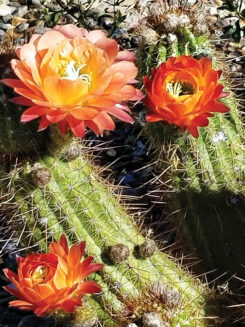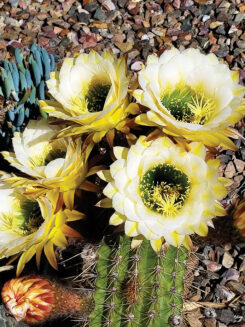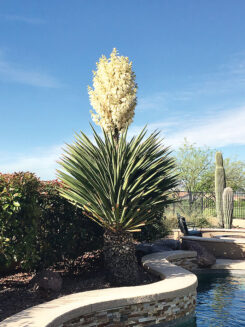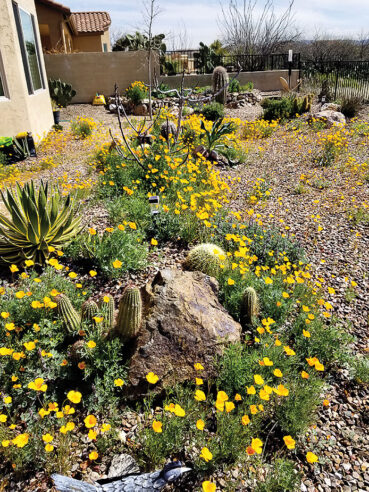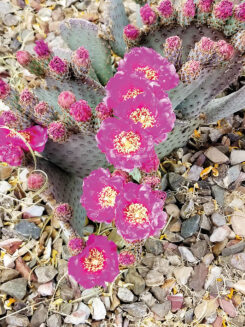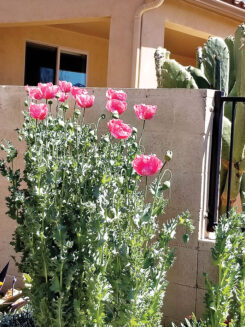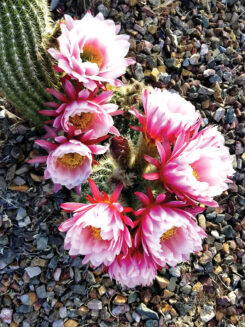Georgine Hurst
Desert blooms are always a delight but nature produced a few surprises this spring after the cool, wet winter. Zann Wilson, a neighborhood master gardener, had nearly forgotten all about the wildflower seeds she scattered throughout her yard a few years ago. Somehow they survived the annual weed killer treatments and bloomed brilliantly this spring.
There is an uncommon Faxon Yucca in the Hurst’s backyard next to the 12th forward tee on the golf course. While it was planted in 2012, it produced a flower sprout for the first time this year that morphed into a magnificent tier of blossoms. Other members of the Yucca genus that are abundant in SBR are Spanish Daggers and Rostratas. Moths pollinate yuccas in the month of April. Have you noticed that the sprouts of all of these plants resemble the asparagus sprouts that we enjoy for dinner? That’s because along with the genus, Asparagus, they are all members of the same family Asparagaceae and the subfamily Agavoideae. As you may already know, when the agave reaches its peak size and beauty, it produces its “asparagus” sprout, then withers and dies. Though the agaves perish after they bloom, yucca and other members of the Agavoideae family survive the sprouting process.
While the prickly pears are just beginning to bloom, there are many other cacti/succulent blossoms in the neighborhood currently.
By the way, the USPS has Cactus Flower stamps right now featuring ten different types. Enjoy exploring the plants and blossoms of our slice of paradise.

